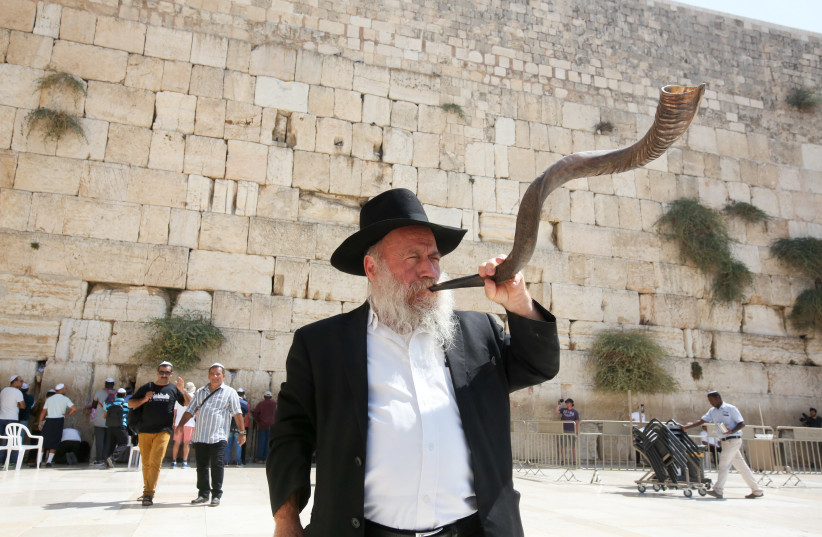It is preparation time for Rosh Hashanah. I can’t get the words of this song out of my head: “Dip the apple in the honey/Make a bracha loud and clear/Shana tova umetuka/Have a happy, sweet New Year!”
Almost every English-speaking preschooler belts out this song every year on Rosh Hashanah. It’s a tradition handed down from parents to children, from sibling to sibling. Singing about dipping apples in honey has come to be as much a universal tradition as actually dipping the apples in honey. Or has it?
Truth be told, not every Jew in the world celebrates the traditions of Rosh Hashanah, the Jewish New Year, in the same way. Even dipping apples in honey.
The Jewish New Year unites the Jewish people
The Jewish people are united in so many wonderful ways, but it is the nuanced differences between us, between Jews from around the world, that compose the beautiful mosaic called Jewish tradition.
In today’s world, there are many Jews who follow the tradition of the great Rabbi Haim Palachi from Smyrna. Also known as the Izmir in Turkey, he served as the chief rabbi of Turkey, or Hakham Bashi of Izmir, at the behest of Ottoman authorities. These Jews do not dip apples in honey on Rosh Hashanah. They do not dip anything in honey on Rosh Hashanah. And yet, they, too, share the tradition of wishing for a sweet new year.
Rabbi Palachi asserted that certain parts of bees – especially their legs, often remain behind in their honey. Unfortunately, and unbeknown to the eater of that honey, those body parts are digested. And that is a major violation of the laws of kashrut. So the Jews of Turkey and many others who follow the teachings of Rabbi Palachi simply dip their apples in sugar.
Another tradition followed by the Jews of Turkish ancestry is to save matzah from the Passover Seder and consume it on Rosh Hashanah. On Passover, matzah symbolizes freedom from slavery. For these Jews, eating that matzah on the New Year symbolizes being saved from evil decrees.
For many, Rosh Hashanah is a time to gather together with family members. There is usually one home that serves as the family base. If we’re lucky, it’s the home of the best cook in the family. Often, it’s the home of one’s grandparents, the largest home, or the one most centrally located.
On Rosh Hashanah, the Jews of Iran go to the homes of families who have lost a relative during the course of the year. There, they recite the entire Book of Psalms twice over. The Book of Psalms is composed of 150 chapters. Multiplied by two, that equals 300. Three hundred is the gematria (numerological equivalent) for the verb kaper the imperative of le’kaper, (to forgive/grant atonement for) from kapara (the atonement we ask for before the High Holidays). Iranian Jews read psalms on Rosh Hashanah, asking forgiveness from the deceased.
The shofar ceremony is, in most traditions, the centerpiece of the service when the synagogue is most crowded. The shofar is blown during the Mussaf section of the morning service.
The eating of simanim (symbols), food wordplays, is traditional in many cultures and families. But the choices of simanim are not universal at all. The Hebrew word for carrot is gezer, the same word as “edict” or “ruling.” Using wordplay, carrots are often consumed with the request that “God rule in our favor.” Moroccan Jews eat seven cooked vegetables on Rosh Hashanah.
On the eve of Rosh Hashanah, all the Jews of Aram Soba, the Syrian Jews of Aleppo, would get haircuts. After their haircut, each person would say to their barber the word neeman. In Arabic neeman means “bless you.” And the barber’s response would be yinam alek, “you too should be blessed.”
During the last days of Elul, on the eve of Rosh Hashanah, children in the Tunisian city of Djerba would collect olives (one of the seven species of the Land of Israel). They would pickle the olives in salt and then walk the streets handing them out. They would call out “olives” followed by “yehi ratzon” (May it be God’s will).
For some hassidic sects, knives symbolize wealth, and it is therefore customary to present a new knife to each family member on Rosh Hashanah, which is then sharpened.
There is no right way and no wrong way when it comes to tradition. It is your way that really matters. It is your way of keeping family traditions and family heritage alive. It is a way of remembering and commemorating.
And there is always room for new traditions. Our family tradition is to blend the old “traditional” with the new. Each Rosh Hashanah we devise new wordplays in English or Hebrew, or even Yiddish and Latin. Our tradition is to be creative linguistically.
Whatever your tradition, honey or sugar, new knives or disposable plastic, I wish a happy, healthy, sweet New Year to all.
May you be inscribed and sealed in the Book of Life.
The writer is a social and political commentator. Watch his TV show Thinking Out Loud on JBS. Read his latest book, Thugs.

